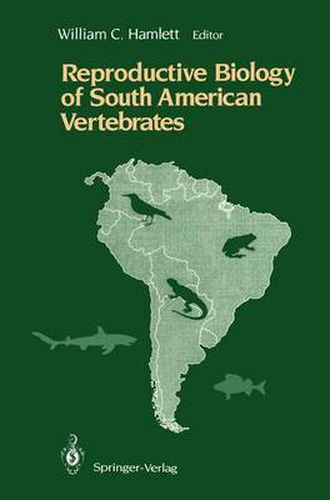Readings Newsletter
Become a Readings Member to make your shopping experience even easier.
Sign in or sign up for free!
You’re not far away from qualifying for FREE standard shipping within Australia
You’ve qualified for FREE standard shipping within Australia
The cart is loading…






This title is printed to order. This book may have been self-published. If so, we cannot guarantee the quality of the content. In the main most books will have gone through the editing process however some may not. We therefore suggest that you be aware of this before ordering this book. If in doubt check either the author or publisher’s details as we are unable to accept any returns unless they are faulty. Please contact us if you have any questions.
South America is one of the few areas of the world that includes vast areas of as yet undisturbed natural habitats. These areas are home to as many as half the world’s species of plants and animals. Many of the animals inhabit ing these areas are of direct and immediate economic importance, while others are of unknown potential value. With economic development of these areas, there is a coincident disruption of natural habitats that have a direct impact on the reproductive capabilities of the affected species. Re production is central to the survival of all species and, regardless of the environmental stresses imposed on them, scientific attention must be fo cused on reproductive biology as a way to deal with these pressures. It is vitally important to gather as much research data as possible on the repro ductive biology of the species on this continent in order to provide gov ernmental agencies and scientists with the most accurate information on which to base decisions regarding development. This volume is intended to draw attention to these pressing matters by gathering a wide representation of scientists actively engaged in reproduction research relating to South American vertebrates. It is intended that this volume will serve as a re source for individuals and organizations interested in reproductive biology and species survival. An additional benefit is that economically important species, as well as potentially important ones such as sharks, will be dis cussed.
$9.00 standard shipping within Australia
FREE standard shipping within Australia for orders over $100.00
Express & International shipping calculated at checkout
This title is printed to order. This book may have been self-published. If so, we cannot guarantee the quality of the content. In the main most books will have gone through the editing process however some may not. We therefore suggest that you be aware of this before ordering this book. If in doubt check either the author or publisher’s details as we are unable to accept any returns unless they are faulty. Please contact us if you have any questions.
South America is one of the few areas of the world that includes vast areas of as yet undisturbed natural habitats. These areas are home to as many as half the world’s species of plants and animals. Many of the animals inhabit ing these areas are of direct and immediate economic importance, while others are of unknown potential value. With economic development of these areas, there is a coincident disruption of natural habitats that have a direct impact on the reproductive capabilities of the affected species. Re production is central to the survival of all species and, regardless of the environmental stresses imposed on them, scientific attention must be fo cused on reproductive biology as a way to deal with these pressures. It is vitally important to gather as much research data as possible on the repro ductive biology of the species on this continent in order to provide gov ernmental agencies and scientists with the most accurate information on which to base decisions regarding development. This volume is intended to draw attention to these pressing matters by gathering a wide representation of scientists actively engaged in reproduction research relating to South American vertebrates. It is intended that this volume will serve as a re source for individuals and organizations interested in reproductive biology and species survival. An additional benefit is that economically important species, as well as potentially important ones such as sharks, will be dis cussed.